Pennsylvania Company Wins Streetcar Contract
Brookville Equipment wins city bid over 3 companies, will charge $18.6 million for 4 streetcar vehicles.
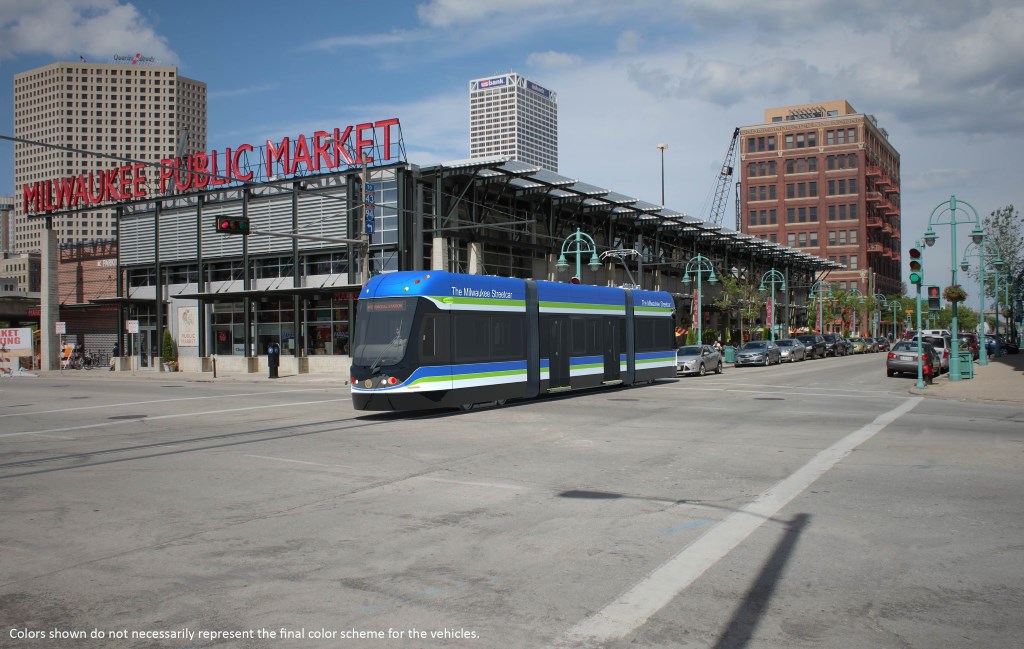
A rendering of a Brookville streetcar in Milwaukee’s Third Ward. Milwaukee’s streetcars will be manufactured by U.S.-based Brookville Equipment Corp.
The City of Milwaukee has approved an $18.6 million contract with Pennsylvania-based Brookville Equipment Corp. for four streetcar vehicles, with an option for up to 20 more. The vehicles will enter service in 2018 when the first phase of the streetcar system goes into service, but are expected to be delivered in 2017.
Brookville’s modern streetcar line, dubbed the Liberty Modern Streetcar, was selected from bids by four companies. This Brookville vehicle is in use on the newly opened Dallas Streetcar, including a segment over the Trinity River that operates without overhead wires. The Milwaukee Streetcar project team does not anticipate using that configuration today, but the vehicles could be retrofitted to include such functionality in the future.
Brookville has a long history with streetcars, having over 70 vehicles in operation, mostly restored heritage vehicles in New Orleans, Philadelphia and San Francisco. The company is actively manufacturing two vehicles for Dallas and is under contract to provide six vehicles to the Detroit system which is now under construction.
The Liberty vehicles are 8 feet 8 inches wide and 66-feet long. The vehicles feature 32 seats and a capacity of 150 passengers total. They weigh 79,000 pounds when empty. The planned useful life of the vehicle is 30 years. The maximum speed is currently intentionally limited to 42 miles per hour.
The $18.6 million contract breaks down to $13.87 million for the vehicles, $3.79 million for support, approximately $400,000 for additional support and $546,426 for spare parts.
The vehicles will be built in Pennsylvania, complying with the Buy American provisions required by federal grants that will largely fund the Milwaukee Streetcar. The lakefront line of the system, funded in large part by a recently awarded $14.2 million federal grant, will require the city to order an additional vehicle, likely within six months.
Local firm Milwaukee Composites, which makes flooring components for mass transit vehicles, will provide the flooring for the vehicles. They are donating the floor system to Brookville and the streetcar project at no charge. The donation is included in the contract. Milwaukee Composites, which frequently provides streetcar flooring, was a part of multiple bids.
The vehicles will be stored and maintained at the planned Milwaukee Streetcar Operations and Maintenance Facility.
The other bidders to provide the vehicles were Inekon, Siemens and Vossloh.
Construction Work
Construction work on the public utilities is underway on the route already, while work on the actual streetcar system won’t begin until the spring. Private contractors are relocating an eight-inch Milwaukee Water Works main located in the footprint of the route on N. Jackson St. That work is expected to last into December.
Additional construction work from the private utilities is expected to begin in the coming months. A final design plan from We Energies has been received and is under review by the streetcar project team. Milwaukee Public Works Commissioner Ghassan Korban said he can’t comment on the final cost proposed by We Energies, but that it is less than the approved amount by the Common Council. Final design approval is also underway with the telecommunications companies.
Lakefront Line
Work is full speed ahead on the lakefront line extension of the streetcar following the award of $14.2 million from the federal government via a TIGER grant. The lakefront extension, which will run down E. Michigan St. and E. Clybourn St. to N. Lincoln Memorial Dr., will connect the system with a range of attractions and office buildings.
Work is expected to be completed on the lakefront line in early 2019, about six to nine months after the first phase of the system opens. Engineering work on this extension is about 30 percent completed according to the Concord Group’s Tim Clancy. The Concord Group serves as the city’s owner’s representative on the project.
Dallas Streetcar
Urban Milwaukee Streetcar Coverage
- City Accepts $14 Million Federal Streetcar Grant – Michael Horne – October 29th, 2015
- Anti-Streetcar Petition Dies – Bruce Murphy – August 28th, 2015
- Scott Walker Aids Milwaukee Streetcar – Jeramey Jannene – July 13th, 2015
- Streetcar Construction Starts in October – Jeramey Jannene – July 10th, 2015
- The Strange Politics of Anti-Streetcar-ites – Bruce Murphy – June 18th, 2015
- Anti-Streetcar Petition Drive Fails – Bruce Murphy – March 5th, 2015
- Streetcar Signing Is Quite a Celebration – Michael Horne – February 13th, 2015
- Milwaukee Streetcar Approved – Jeramey Jannene – February 10th, 2015
- Who’s Lobbying for the Streetcar – Bruce Murphy – February 5th, 2015
- Will Streetcar Help the Inner City? – Bruce Thompson – February 4th, 2015
- City Attorney Says Streetcar Petitions Might be Moot – Bruce Murphy – January 30th, 2015
- Millennials And The Streetcar – Bruce Thompson – January 27th, 2015
- Streetcar Responses Show Wide Support – Jeramey Jannene – January 22nd, 2015
- Streetcar Approved, but Held – Jeramey Jannene – January 21st, 2015
- Koch-Funded Group Backs Anti-Streetcar Drive – Bruce Murphy – January 20th, 2015
- Streetcar Backers Say They Have the Votes – Jeramey Jannene – January 20th, 2015
- Who is Funding the Anti-Streetcar Effort? – Bruce Murphy – January 20th, 2015
- Will Anti-Streetcar Referendum Succeed? – Bruce Murphy – January 9th, 2015
- The Story Behind the Streetcar Referendum – Michael Horne and Bruce Murphy – January 8th, 2015
- Council Delays Streetcar Until January – Jeramey Jannene – December 16th, 2014
- Committee Takes No Action on Streetcar – Jeramey Jannene – December 10th, 2014
- Committee Approves Milwaukee Streetcar – Jeramey Jannene – December 9th, 2014
- RACM Approves Tax Funding for Streetcar – Michael Horne – December 8th, 2014
- How to Sell the Streetcar – Michael Horne – November 28th, 2014
- Next Stops for the Streetcar – Michael Horne – November 24th, 2014
- Barrett Moving Forward with Streetcar – Jeramey Jannene – November 18th, 2014
- Who Will Be Streetcar Operator – Michael Horne – May 8th, 2014
- A Streetcar Named Cooperation? – Dave Reid – April 27th, 2014
- How a Streetcar Spurs Development – Angie Schmitt – November 3rd, 2013
- Streetcar Social – Michael Horne – September 12th, 2013
- Mayor Says Streetcar is a “Trojan Horse” – Michael Horne – April 17th, 2013
- Whoops, We Changed Our Mind – Dave Reid – September 27th, 2012
- Battle of the Bobs: Donovan vs Bauman Streetcar Press Conference – Jeramey Jannene – May 18th, 2012
- Important Hoan Bridge and Milwaukee Streetcar Meetings This Week – Dave Reid – November 14th, 2011
- Milwaukee Streetcar Passes Common Council – Jeramey Jannene – July 26th, 2011
- Keep the Milwaukee Streetcar Moving Forward – Jeramey Jannene – July 8th, 2011
- Milwaukee Streetcar at Apex – Jeramey Jannene – June 16th, 2011
- Milwaukee Streetcar Takes Key Step Forward – Jeramey Jannene – May 6th, 2010
- Milwaukee Streetcar Meeting This Thursday – Jeramey Jannene – October 5th, 2009
- Milwaukee Streetcar Routes Unveiled by Mayor Barrett – Jeramey Jannene – September 21st, 2009
- Milwaukee Streetcar Round-Up – Jeramey Jannene – April 19th, 2009
- Vote for your Favorite Milwaukee Streetcar Route – Jeramey Jannene – March 25th, 2009
- Design Your Own Streetcar Route – Jeramey Jannene – March 23rd, 2009
- Streetcars Coming to Milwaukee – Dave Reid – March 14th, 2009
More about the Milwaukee Streetcar
For more project details, including the project timeline, financing, route and possible extensions, see our extensive past coverage.
- Another Streetcar Collision - Jeramey Jannene - Jun 27th, 2025
- Streetcar Hit By Apparent Red Light Runner - Jeramey Jannene - Jun 16th, 2025
- Streetcar Will Run On Consolidated Route During Summerfest - Jeramey Jannene - Jun 11th, 2025
- City Hall: Milwaukee Must Replace Failing Streetcar Switches - Jeramey Jannene - Feb 24th, 2025
- Streetcar Confronts Limited Funding, Operations Challenges - Evan Casey - Jan 22nd, 2025
- Council Kills Streetcar’s ‘Festivals Line’ - Jeramey Jannene - Jul 31st, 2024
- Streetcar Will Use Festivals-Oriented Route Through Summer - Jeramey Jannene - Jul 9th, 2024
- The Hop’s Lines Will Merge For Easier Summerfest Service - Jeramey Jannene - May 30th, 2024
- Streetcar Begins Daily Service To The Couture, BRT Will Soon Follow - Jeramey Jannene - Apr 11th, 2024
- Milwaukee’s Three Streetcar Extensions Need Mayoral Direction - Jeramey Jannene - Nov 8th, 2023
Read more about Milwaukee Streetcar here
Eyes on Milwaukee
-
Church, Cupid Partner On Affordable Housing
 Dec 4th, 2023 by Jeramey Jannene
Dec 4th, 2023 by Jeramey Jannene
-
Downtown Building Sells For Nearly Twice Its Assessed Value
 Nov 12th, 2023 by Jeramey Jannene
Nov 12th, 2023 by Jeramey Jannene
-
Immigration Office Moving To 310W Building
 Oct 25th, 2023 by Jeramey Jannene
Oct 25th, 2023 by Jeramey Jannene


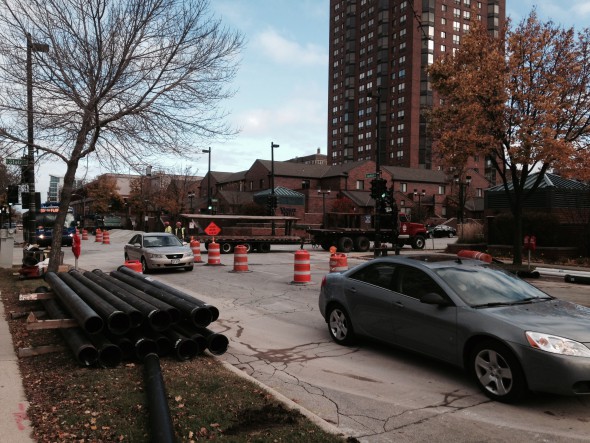
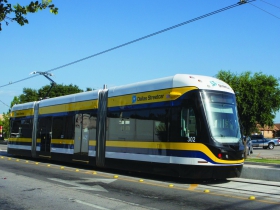
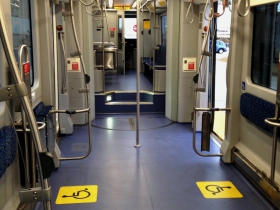
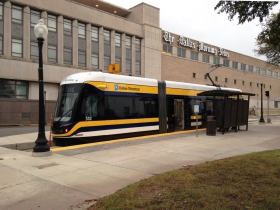
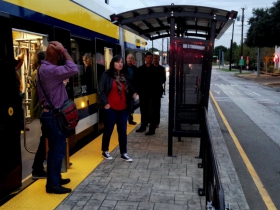



















Any idea if the street cars will have a place to bring bicycles on board?
@Ryan S Yes! They will have bicycle racks on board.
@Ryan S – Yes, you will be able to wheel your bike right on (as well a stroller, grocery cart, etc). Roughly 70% of the interior of the vehicle is level with the station. I am unsure if the vehicles will have bicycle racks installed in them, as say the Minneapolis light rail system does. I will ask.
Great to see the streetcar progressing! It will almost certainly struggle, but if citizens and visitors begin to see it as an amenity, then soon enough the expansions will come. A shame that will take a dramatic cultural shift . . .
I’m down to ride it though!
Regarding the bicycle racks: for budget and capacity reasons, choices will need to be made. We can either provide room for bikes or install thick foam rubber walls in the streetcars for the lunatics who dreamed this up and those who think it’s a good idea.
Only 32 seats, and 2 doors per side?! That sounds like a small streetcar! I was on the Hudson-Bergen line yesterday. They have a similar double articulated design but but their vehicles seat 68 and hold 200, and have 4 doors per side. Even the Twin Cities light rail has vehicles that seat 68 passengers. Why is Milwaukee getting such a small vehicle?
Matthew: Living downtown on a corner where bus lines stop and where the free trolley-bus has run around in circles empty or nearly-empty, I notice ridership. I would say 32 seats is more than enough.
Matthew, I too was surprised they only have two doors per side, but that isn’t so different from Portland which has three doors per side, one of which is narrow (like a bus door) and two are double-width. Judging from photos, it looks like our doors will both be double-width.
This door configuration might simplify station design. At stations, sidewalks must be somewhat higher than normal to align with the streetcar floor. Since both of these doors are near each other in the car’s center, only a short section of curb must be raised, allowing more room to slope down to normal height. By contrast, the Portland design (with an additional narrow door is at the end of the car) requires a longer (presumably more expensive) elevated curb.
One of the differences between streetcars and light rail is vehicle size; streetcars are shorter. Milwaukee’s (streetcar) seating is less than Minneapolis’ (light rail) because our cars are shorter (67 feet vs something over 90 feet) and the “lost” space was all seating.
Streetcars ride much smoother than buses and, unlike buses, never unexpectedly turn or swerve, so it is much easier to stand on a streetcar than on a bus. Think of a streetcar as a horizontal elevator where most rides are just a few minutes long. Elevators have no seats yet nobody misses them.
A quick search shows that 32 seats is right in line with other similar systems – Kansas City (34 seats), Seattle (27 seats), Tucson (29 seats). Dallas uses the same cars we will, and Detroit has those cars on order as well, and so presumably have similar seating capacity.
Two doors per side (with some having a smaller, third high-level door) seems to be pretty standard as well.
Inekon, not Inekom is the first company mentioned.
As far as doors and seats, 2 doors for ingress and egress is adequate. Also, most people will be inside the vehicle for 10 to 15 minutes (tops). So, they don’t need a lot of seats. When the system expands to the airport, for example, longer vehicles with more seats would probably be requested, or required.
If you want to know what a modern light rail / streetcar system should be patterned after, go to Dallas.
I hate their football, but their transit is first-rate.
Will the streetcar get signal priority?
@Sam – I asked about signal priority and was told, essentially, “maybe.” I tend to think that means “no” it won’t have signal priority. It should, but given that the city/county have yet to give any bus routes signal priority, I’m not too hopeful.
@Mark M – I’d disagree about Dallas being a model transit system. They have rather low ridership per mile; light rail systems in Minneapolis/St. Paul, Portland, San Diego, and a number of others are far more productive. Dallas does have a rather extensive light rail network (as well as a commuter rail line and a couple of streetcar lines) but other cities/systems have been far more successful at generating ridership.
You have to wonder if (and, if so, how much) the Talgo debacle affected the streetcar bid.
Did some potential vendors avoid bidding? Did any add a million or two to the total in case Walker or his legislature (or even his court) do something to derail the streetcar?
@Tom D – It looks like Dallas paid Brookville $9.2 million for two streetcars, pretty much in line with Milwaukee paying $18.6 million for four streetcars.
Here is a brief article about who rides Portland’s streetcar (only 5% are tourists, but 40% don’t have a car) and what it has meant for Portland’s economy.
https://nextcity.org/daily/entry/new-survey-portland-streetcar-ridership-locals-tourists
The comparison with Portland seems kind of questionable to me. I think (could be wrong) their Streetcar is almost 4 times the size of Milwaukee’s little 2 mile loop. Moreover, the Milwaukee route makes little sense to me in terms of getting people to workplaces if they don’t live in the immediate proximity of a station. For me, it’s a question of what the city NEEDS, nothing more, in relation to the cost and disruption involved.
I am in favor of various kinds of transportation options. I used public transportation and commuter trains in Chicago and environs for many years and realize the benefits offered there. My son still lives in City of Chicago and seldom drives. He uses busses and “The L” (and when it’s nice outside he elects to walk a couple miles to and from work). But this ain’t Chicago, friends. This has the look of an expensive novelty item to me, with little actual benefit.
The Portland Streetcar isn’t quite 4 times the length, but in the 3-4 times range. But it’s been extended multiple times, so initially it wasn’t 7+ miles in length. And the Milwaukee Streetcar route is not a loop, as was considered when first proposed. I am concerned that without further extensions it may struggle to draw ridership. But Milwaukee is more densely-populated than Portland, roughly 6200 ppl/sq mi compared to 4600 ppl/sq mi, so…
If the Milwaukee Streetcar is a one-off, stand-alone project, never extended and without the city changing how it views, marks, and constructs streets, it may well be more a novelty. If it is the first phase of a larger transit expansion, and is accompanied by changes that make the surrounding areas more pedestrian-friendly and improve transit service beyond just the streetcar, I think it may well attract significant ridership.
Portland’s streetcar was 2.4 miles long when it opened in 2001. It’s first expansion (to a total of 3.0 miles) came nearly 4 years later, and it was extended another 4 times since.
The average ridership over the past 7 years in Portland has been about 4.1 million. With the hypothetical route extensions, Milwaukee’s ridership might increase to 1.66 million per year in 2030. For a price tag total of $95.8 million for the initial route and potential extensions, Milwaukee is expected to see only 40% of the annual ridership of the Portland system.
Fares, promotions, and sponsorships only account for only 9% of a $5.5 million annual operating cost in Portland, or just 9%. The other 91% of the operating costs ($5 million) come from TriMet (a regional transit authority) and the City of Portland, both funded by the taxpayers. It is difficult to imagine the Milwaukee streetcar doing any better with at best, just 40% of the ridership of the Portland line.
So for $7.7 million more than the initial Portland loop, Milwaukee is on the verge of creating a streetcar line using funds from a bankrupt Federal government to pay for a line with annual operating costs heavily subsidized by local taxpayers that may only carry 40% of the riders of the model upon which it was based. All of this on top of the enormous cost to relocate utilities in downtown Milwaukee.
In a survey taken by the Milwaukee Business Journal, 77% of respondents said the Milwaukee streetcar project should be scrapped. Count me among them.
Here are a couple of thoughtful and well documented articles that cemented my opinion. If you read them and find you still think this is a responsible way to spend our money, let us know, please.
http://www.economist.com/news/united-states/21611123-federal-subsidies-have-inspired-some-silly-transit-projects-rolling-blunder
http://object.cato.org/sites/cato.org/files/articles/streetcarscam-otoole.pdf
Randal O’Toole? OK, serious transit discussion is over.
@Al Lindro
You linked to two articles, one written by Randal O’Toole, and another that uses Mr. O’Toole as a source. As “Eric S” said, you simply can’t take Mr. O’Toole seriously.
You must realize who pays his salary. He seems to be employed by various right-wing “think tanks” who (since the 2008 death of Paul Weyrich—google him!) have a visceral hatred of all passenger rail.
His writing often looks scholarly and well-sourced, but it is loaded with inaccuracies and half truths.
Let me give you one example of those inaccuracies from the article you cited.
On page 16 Mr. O’Toole’s writes that buses could replace streetcars and provide the same service at “an annual operating cost of less than $450,000 a year…”
O’Toole’s argument is straightforward and based on five premises:
1. The streetcar will operate about 50,000 miles/year. (Untrue)
2. Buses would travel no more vehicle-miles than streetcars. (Untrue)
3. Buses could replace streetcars on a one-for-one basis and run as frequently. (Untrue)
4. MCTS spent $8.57 on each bus-mile in 2010. (True, but irrelevant)
5. There will be no net inflation between 2010 and 2015. (Unlikely)
He then concludes that the streetcar could be replaced by 50,000 annual miles of bus service at a cost of $8.57/mile (about $430,000/year).
Five of Mr. O’Toole’s premises are untrue, irrelevant, or unlikely:
1. The streetcar will actually operate about 144,000 miles/year—not the 50,000 miles Mr. O’Toole claims on page 16. Streetcars will make about 658 round trips each week. Each round trip will be 4.2 miles. Do the math.
2. Replacement buses would not travel 144,000 mile like the streetcars, but would need to drive about 164,000 miles a year just to make the same number of round trips.
Most buses drive a few extra blocks to turn around at the end of a trip. Streetcars are bi-directional; they have headlights, taillights, & driver’s seats at each end, and don’t need to loop around.
At Farwell and Ogden, for example, an “equivalent” bus would travel at least three extra blocks, perhaps to Prospect and Knapp and back. At the other end, 4th and St. Paul, another 4 extra blocks of travel would be needed (out to 5th and Clybourn and back).
These two loops add about 0.6 miles (and 6 time-consuming traffic signals) to each 4.2-‐mile round trip—about 20,000 more miles/year than “equivalent” streetcars.
3. Mr. O’Toole’s buses could not maintain the same schedule as streetcars; this would either mean longer waits between vehicles or an expensive extra vehicle (and driver) out on the road to maintain frequencies.
On page 18, Mr. O’Toole suggests three types of buses to replace Milwaukee’s streetcar. All three (“double-decker”, “luxurious single-decker”, and “reasonably comfortable buses with a pseudo-trolley appearance”) require passengers to climb at least several steps when boarding & exiting. By contrast, the streetcar will not require climbing even one step.
The fewer steps a vehicle has, the less time it spends at stops and the faster it can complete its route. Buses (especially those specifically suggested by Mr. O’Toole) simply can’t service stops as fast.
And at the end of each run, the turn-‐around loops described above add 0.6 miles and 6 delaying traffic signals to each round-‐trip on buses (but not streetcars).
4. The per-mile cost of operating buses County-wide is irrelevant and misleading. Per‐mile bus operating costs within downtown are much higher than out at, say, 76th and Capitol.
Within downtown, buses spend more time stopped than moving (because downtown has more red lights and increase passenger counts than elsewhere) which substantially increases per-mile costs (compared to the rest of the County).
The county-wide per‐mile cost Mr. O’Toole cited does not reflect downtown costs at all and seems intentionally misleading.
5. Even though costs for nearly anything (including bus operations) in 2015 will likely be higher than in 2010, Mr. O’Toole ignores this and directly compares 2015 streetcar costs with 2010 MCTS costs, without any inflation adjustment.